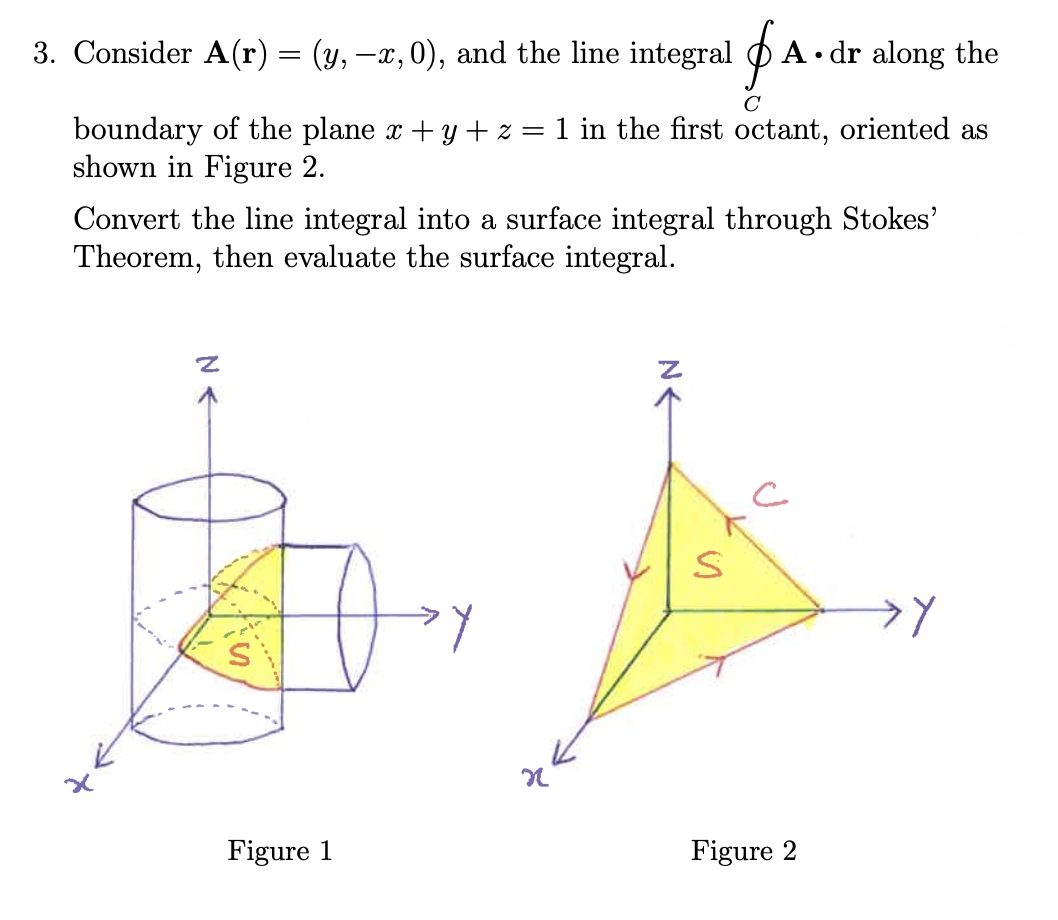3. Consider A(r) = (y, -x,0), and the line integral A• dr along the C boundary of the plane x + y + z = 1 in the first octant, oriented as shown in Figure 2. Convert the line integral into a surface integral through Stokes' Theorem, then evaluate the surface integral.
3. Consider A(r) = (y, -x,0), and the line integral A• dr along the C boundary of the plane x + y + z = 1 in the first octant, oriented as shown in Figure 2. Convert the line integral into a surface integral through Stokes' Theorem, then evaluate the surface integral.
Algebra & Trigonometry with Analytic Geometry
13th Edition
ISBN:9781133382119
Author:Swokowski
Publisher:Swokowski
Chapter11: Topics From Analytic Geometry
Section: Chapter Questions
Problem 18T
Related questions
Question

Transcribed Image Text:3. Consider A(r) = (y, –x, 0), and the line integral Ø
A• dr along the
C
boundary of the plane x + y + z = 1 in the first octant, oriented as
shown in Figure 2.
Convert the line integral into a surface integral through Stokes'
Theorem, then evaluate the surface integral.
Figure 1
Figure 2
Expert Solution
This question has been solved!
Explore an expertly crafted, step-by-step solution for a thorough understanding of key concepts.
Step by step
Solved in 2 steps

Recommended textbooks for you

Algebra & Trigonometry with Analytic Geometry
Algebra
ISBN:
9781133382119
Author:
Swokowski
Publisher:
Cengage

Elementary Geometry For College Students, 7e
Geometry
ISBN:
9781337614085
Author:
Alexander, Daniel C.; Koeberlein, Geralyn M.
Publisher:
Cengage,

Algebra & Trigonometry with Analytic Geometry
Algebra
ISBN:
9781133382119
Author:
Swokowski
Publisher:
Cengage

Elementary Geometry For College Students, 7e
Geometry
ISBN:
9781337614085
Author:
Alexander, Daniel C.; Koeberlein, Geralyn M.
Publisher:
Cengage,